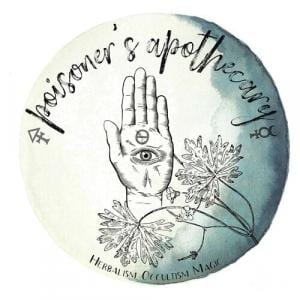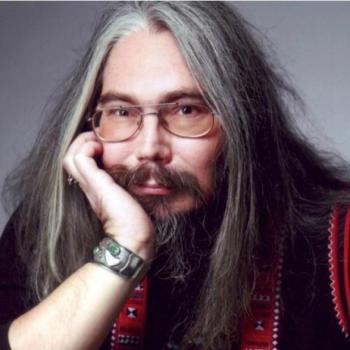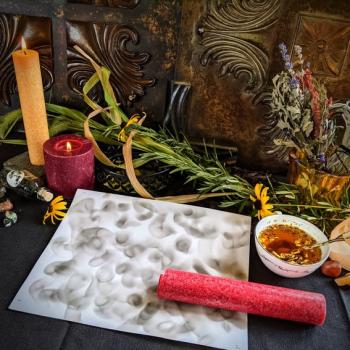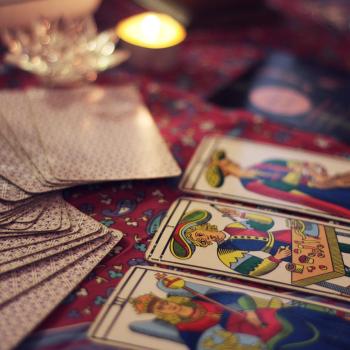Bane & Beauty
I love connecting with other individuals who identify with the Poison Path, we call ourselves “poisoners,” which is appropriate due to our willingness to explore the medicinal, magical and spiritual benefits of potentially toxic plants. Following the work of such individuals who just seem to “get it,” is a rewarding and humbling experience. Dylan Pierce is one such individuals, whose work I have followed for a number of years. It has been an awesome experience growing alongside him, watching our strange little community grow, sharing a common love for these plants that have so much to teach us. The paradox of “Bane & Beauty” is what initially attracted me to these plants, their aura of mystery and trepidation, coupled with their distinct beauty. A true synthesis of something that transcends notions of dark and light, having evolved into something that is completely Other.
Dylan is one of the page admins for the growing community of entheogenic herb enthusiasts at The Poison Path: Historical, Lore, Medicinal Study, he is an avid gardener, and experienced formulary of traditional ritual entheogens operating under the name Bane & Beauty. Dylan creates a number of high quality medicinal and ritual products, and is a trusted resource for those interested in working with baneful herbs.
Thank you again Dylan for participating in this interview! Join Dylan and I on our walk down the Crooked Path.
The Interview
“I’m a 28-year-old witch/animist/poisoner living in the Appalachian Mountains. I grew up in a lake area where most of the homes were vacation homes, and the rest were elderly. As a result, the majority of my time was spent exploring the woods alone or visiting a neighbor and chatting hidden landmarks or plants over tea. My family was really into gardening and herbal medicine as well, so plants were always taught and were always a pretty huge part of my life. I found witchcraft pretty young too, despite my highly religious family. As an adult, Mandrake finally helped me get over my Black Thumb. Growing things has taken over my life ever since, and it’s forever changed my practice. That shift has sort of caused my practice to become predominantly “green” and much deeper intertwined with the local area and its unique flora. It’s much better connected my craft with all those years of learning about the land and the plants that might not be as common in European witchcraft, but may be just as powerful and may have just as much magic in their history and lore. ” – Dylan Pierce
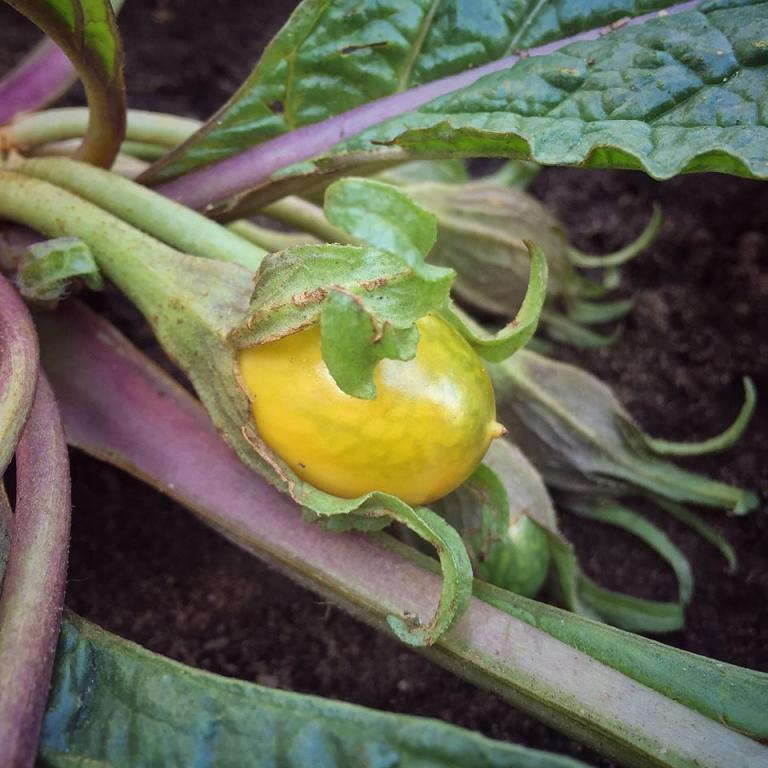
• Baneful herbs are a paradox, strangely beautiful and potentially deadly. It is this combination of contrasting elements that gives these plants their allure. Bane & Beauty captures just such a connection. How do you view the connection between these opposing elements and how does that apply to the use of these plants for spiritual and magical purposes?
The bane and beauty are like an intricate dance that is forever changing throughout the plant’s life. A few of the poisons possess more of a classical beauty, but most of them are as you said, more “strangely beautiful”. When they grow up, some can become a great deal more fascinating and seductive. They may lure you in with their sweet-but-deadly fruits or their intoxicating flowers. The alkaloids and effects also do a transformative dance of their own as they mature. Some plants may be edible one moment and poisonous the next, and the same alkaloids that may cause mania and terrible death may also be carefully approached and convinced to provide comfort or to instead maintain life. I often feel that these plants test the poisoners with this seductive and dangerous dance. They demand you get to know them slowly, that you respect them, and that you never take more than offered of them or make assumptions of how they should treat you in return. If ever you fail this test, they can quickly and wrathfully eliminate a person, or at least that person’s desire to ever work with them again. There is also the dance of the poisoner; forever communing with the Green Ones in hopes that we may gracefully follow their lead, knowingly offering ourselves to those potentially wrathful hands just so we may eventually gain them as an ally and be gifted a few of their secrets. Through gentle approach, one learns to better understand and respect both sides of the dance, and to sing their songs, either metaphorically or quite literally as has been seen in certain histories and folklores. To this day, many still consider the practice of these communications with the plant, which honor their both beautiful and terrifying nature as a means of appeasing, to be an essential step before harvesting or working with them. Lore can even be found as to curses befalling those who fail to sing praise of this dualistic nature and woo the Plant Spirits. Sometimes this may call for specific timing, actual dancing, or other practices and offerings. With or without singing literal songs to them, this respect of thorough observation and learning their dances and songs, even just metaphorically, helps a poisoner continue learning and growing.
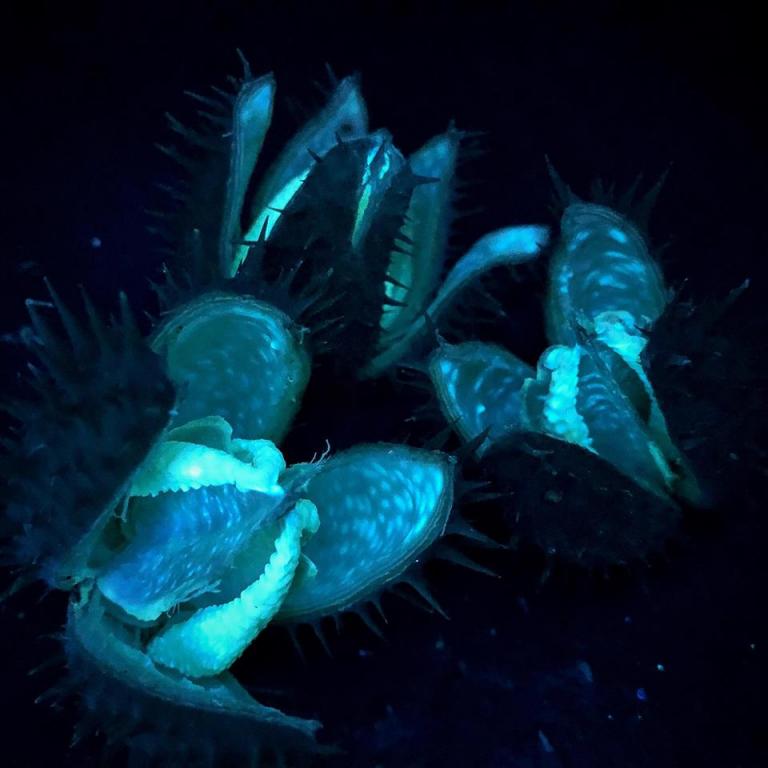
• Poison plays a prominent role in mythology. Many deities associated with witchcraft are also connected with death, sex and the knowledge of poisonous plants. Do you think that the potential lethality allows us to achieve a closer connection to the spirit world through the inherent risk? By using these plants to push our spirits from our bodies do the gods and spirits recognize our willingness to walk with death?
Depending on the circumstances and use, certainly. Particularly to the spirits of the plants themselves. As I mentioned, a huge part of even learning some of their secrets is found in surrendering to them. In addition to this being an offering of self, the act of baring of ourselves to the plants in such a way can also help us to recognize our own willingness to walk with death. The personal realization of this can be just as important as it may be for any other gods or spirits to recognize it. This sometimes marks the beginning of another form of death: that of the ego. The death of ego, to whatever extent an individual may achieve, can come from the mindful willingness to submit or sacrifice as much as it can come from the chemical actions found within some of these plants. That “death” and state of mind, along with the powerful hypnotic, trance inducing effects, can help to loosen spirits attachment to the body and allow us to walk a bit deeper into the Other. It can be a purification of sorts, refining our perception of the world around us while in these trance states, so that we may limit how much our vision is being tainted or altered by fears of the poison, as well as any biases and desires we may have.
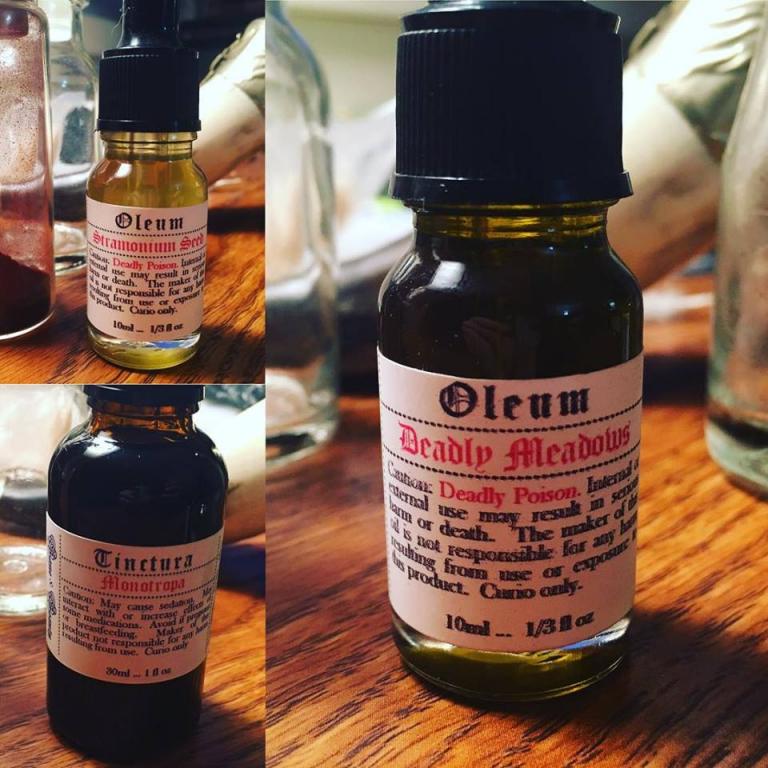
• The time and effort you have put into the study of these plants over the years is evident in your work, and your interactions with others. Your approach is one of respect and reverence for both the plants and the value of academic research. Do you feel that you have learned more through experimentation and individual experience as opposed to academic research?
Honestly, that’s pretty difficult to say; without either of the two, my understanding would be much more incomplete. Academic research gave me a safe starting place so that I didn’t end up dead or in need of medical attention, as well as a better understanding of what is happening physiologically that I may not otherwise be able to observe. This gives me a better idea of things like when to use them or when to use something else instead. Research also discusses the other uses of plants for conditions or situations that may not apply to me or anyone I know, enabling me to see what other proposed uses have been proven effective over the years. Personal experience, on the other hand, provides a much greater understanding to that assault of words. It tells me what works best for me specifically and how that actually feels. Reading about the effects and toxicity versus actually feeling them through a gradually increased range of doses are two different things. Feeling them personally instills a far greater understanding than any simple list of effects could ever provide and can also help overcome any fears that those lists and warnings may have created. As people can respond totally
different, the experiences of other poisoners and witches with the same plants or products sort of gives me even more information to temper the rest with, so I can then help others as well. Balance is essential. One should build a firm foundation using research before beginning to work with dangerous plants, but working with them may then very well end up changing how they are perceived and used.
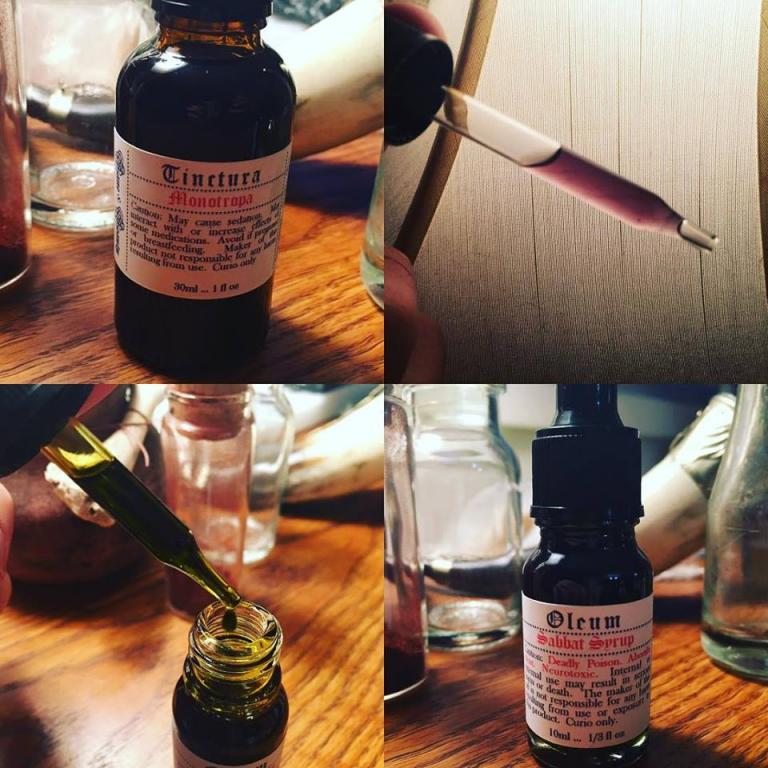
• You have a wide array of oleum, ointments, and balms on your website and Instagram. The labeling is beautifully reminiscent of an old-world apothecary. Are these available for purchase or are you planning for a future launch date?
I’m happy to hear that my labeling evokes such comparison. Many of these oils are more concentrated than some currently on the market (or those historical formulas found in old dispensatories), so I’ve been particularly cautious when it came to slowly opening up the availability to new people of different experience levels. Having seen enough people safely work them into their practices t
o satisfy concerns for peoples’ safety, they are finally available now. I am, however, continuing to limit sales to those initiated via direct messages, rather than an online listing anyone could check out with. This allows me to somewhat screen buyers to make sure they are old enough or otherwise mature enough to responsibly work with such products. For those interested, simply shoot me a message.
• Are there any new projects you are working on? Perhaps a forthcoming book in the works?
I’ve been working on a book for some time now, and it’s been a bit of a terrifying project to write, photograph, and compile. It may eventually see the light of day if I don’t lose my mind first. Other than that, I have been pretty busy getting things ready for the coming green seasons.
• What are you doing to prepare for the growing season? Are there any new plants that you are looking forward to growing?
Lately I’ve been starting some of the early-spring seeds, those that need just a bit of cold to germinate. With temperatures now coming up above freezing, it’s time to prepare many gardens and beds too. Several beds will be created simply by working with the land; thinning and weeding natural patches of ally plants that occur around the property (Mugwort and various nightshades), or by regrouping scattered “weeds” (Chamomile, St. John’s Wort, etc.) into better places and conditions where they will stand more a chance to survive and flourish. Some new plants that I’m excited for this year include Red Brugmansia, Arizona Queen of the Night cactus, and Himalayan Mandrake, among others.
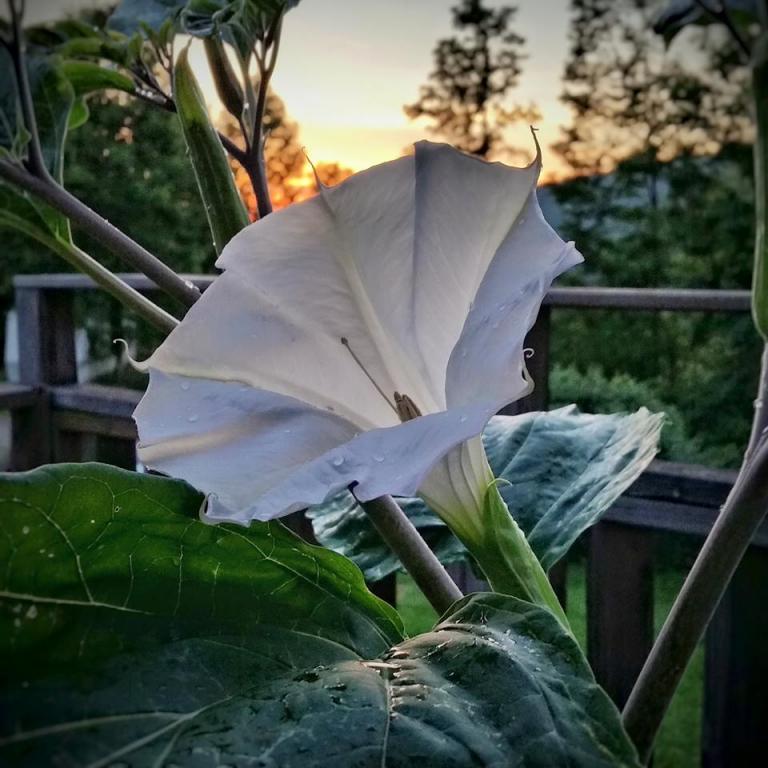
• What are the Baneful herbs growing wildly in your part of the country?
Here in my little woodland ghost town, there is an assortment of potentially harmful plants. A common one is Virgin’s Bower (Clematis virginiana), which looks a lot like Poison Ivy when not in bloom. When fresh, the plant can cause irritation, burning, and blisters. Ingestion can cause convulsions and bloody vomit. Despite this, weak preparations have been used for several ailments, including insomnia, nervous conditions, and certain aches and pains. Washing one’s face and hands with a weak tea has also been used to encourage dreaming. This ally has an assortment of other names, including Devil’s Hair or Devil’s Darning Needles. Another beloved plant found abundantly here is Bloodroot (Sanguinaria canadensis), a tiny Poppy relative. Vision disturbances, nausea and vomiting, paralysis, and loss of consciousness may occur, and the caustic/escharotic nature of the plant can destroy skin tissue and cause precancerous oral lesions. Growing up, I heard some pretty impressive claims regarding cures from Bloodroot given by local Cherokee, as well as cautionary tales from recipients who underestimated the medicine and decided to take more than they were instructed. In addition to being used for oral and respiratory issues such as coughs and sore throats, Bloodroot has also long been used as dye, for love, and is even used as a protective charm. Modernly, it is probably more often carried in sachets, but historically those of the Ponca tribe might rub a piece on their palm before shaking the hand of their desired. Pokeweed (Phytolacca americana) was a huge part of my childhood in Maryland, and grows even more commonly here in Pennsylvania. An aunt had been poisoned by the berries of this one when she was a child, resulting in plenty of education on its safety from my parents when I was growing up. When I was around nine or ten, its young, cooked leaves were one of my favorite foraged
foods that I would often disappear on hikes to retrieve, until they began to mature and become too toxic for consumption. It is again a plant that has been used a great deal as medicine, despite the fear that many here currently have for it. It can make beautiful inks, and due to its purgative nature, it can be good for works involving cleansing, protection, and uncrossing. Water Hemlock (Probably North America’s most deadly plant, and a more unpleasant way to die than the similar-looking Poison Hemlock), Foxglove, Laurels and Rhododendrons, Baneberries, a few of the less toxic Nightshades, etc. There’s a tremendous assortment of potential poisons here in the Appalachians, but the benign plants are just as fascinating.
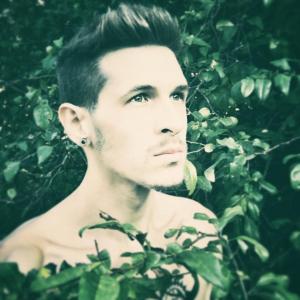
I’m a 28-year-old witch/animist/poisoner living in the Appalachian Mountains. I grew up in a lake area where most of the homes were vacation homes, and the rest were elderly. As a result, the majority of my time was spent exploring the woods alone or visiting a neighbor and chatting hidden landmarks or plants over tea. My family was really into gardening and herbal medicine as well, so plants were always taught and were always a pretty huge part of my life. I found witchcraft pretty young too, despite my highly religious family. As an adult, Mandrake finally helped me get over my Black Thumb. Growing things has taken over my life ever since, and it’s forever changed my practice. That shift has sort of caused my practice to become predominantly “green” and much deeper intertwined with the local area and its unique flora. It’s much better connected my craft with all those years of learning about the land and the plants that might not be as common in European witchcraft, but may be just as powerful and may have just as much magic in their history and lore.
Follow Dylan and his work on Instagram @baneandbeauty
Check out his website http://baneandbeauty.com
Interview by Coby Michael Ward of Poisoner’s Apothecary
